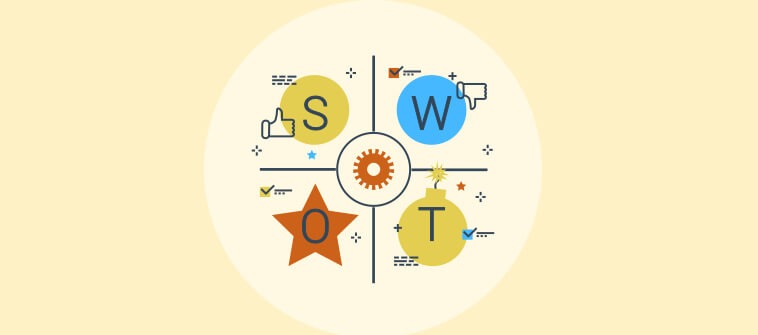Project resource management is an incredibly complex field.
Not only do those new to the industry have to learn “resource planning” and “resource risks” but they also have to understand how to better manage a team to deliver projects on time, on budget, and with quality.
Effective project resource management requires a thorough understanding of your business objectives and capacity. Everything right from office stationery to the financial costs associated with various project tasks, all resources must be diligently managed.
In this blog, we will share how to create efficient resource plans, their challenges, and some of the best ways of scheduling your resources for efficient development and timely deliveries.
Let us begin with an understanding of a resource plan.
Why Is Project Resource Management Important?
- Minimize project development costs
- Bridge the gap between demand and capacity
- Monitor your human resources and improve their abilities
- Effective and billable utilization of human resources
- Smart and judicious use of scarce resources
The Challenges of Project Resource Management
The 4 Stages of a Project Resource Plan
What Are Some Resource Management Techniques?
Project Resource Management – The Key to Successful Projects
FAQs
What Is a Resource Plan?
As shown above, a resource plan identifies all the physical resources required for completing a project. The plan lists each of the resource types, such as people, skill sets, time, software, and the quantity of each of these resources required for any particular project.
Apart from this listing, it also indicates the dependencies and allows the project managers to manage all the project resources effectively without any resource collision.
A robust project plan ensures that no project activity gets derailed and the right resources land in the hands of those “who” need them and “when” they need them.
Hence, creating a resource plan is one of the foremost things to do while working on a project. Now, let’s understand the importance of project resource management.
Read More: A Step By Step Guide To Project Planning
Why Is Project Resource Management Important?
According to a recent survey, when it comes to project challenges, project resource management takes the top position- leaving behind other challenges such as project prioritization and visibility.
The mere thought of resource management might appear easy at first. After all, you just have to see whether your team has the right resources or not.
However, things can easily spiral out of control when hundreds of developers, designers, marketers, managers, etc. are working on multiple projects with a fixed set of resources, and allotting each one with dedicated resources amounts to more confusion and worry.
Therefore, it is clear that without effective resource management, a successful project is only a far-fetched dream. Given below are five powerful points highlighting the importance of resource management in project management.
1. Minimize Project Development Costs
With an organization-wide view of resources, their availability, and allotment statuses, you can tap into the low-cost resources from across the globe and utilize them in a cost-effective manner. This right mix of local and global resources helps you in minimizing your development costs and facilitates smart resource allocation that spawns timely project deliveries within your budget.
A resource management plan also enables you to distribute key project resources uniformly across all the running projects, instead of focusing solely on a high-priority project.
Read More: What Is Cost Management in Project Management
2. Bridge the Gap between Demand and Capacity
With project resource management, you can do demand forecasting that allows you to foresee any resource demands well ahead of time. You can assess and analyze any skills gap that can affect project development. You can also identify the excesses or shortages of any type of resources and formulate a smart action plan to tackle them proactively.
With such a transparent understanding, you can effortlessly bridge the gap between demand and capacity.
3. Monitor your Human Resources and Improve their Abilities
The employees in any organization look up to the leaders for professional development. If you fail to inspire and motivate your teams, it amounts to reduced engagement, low productivity, and unplanned employee attrition. Resource management software offers you clear views of employee skills and performance that prove helpful in training and motivating them for better work standards and professional growth.
4. Effective and Billable Utilization of Human Resources
Resource management facilitates efficient and smart utilization of human resources and allows you to forecast any specific needs in advance.
Hence, you can mobilize your human resources from a non-billable random resource pool to the billable repository for strategic working. There are times when human resources are rolled-off from certain projects, they are on the bench since no suitable work is available for them in the organization.
With timely visibility into such scenarios, you can engage these resources in non-billable work for the time being and then relocate to the billable work (strategic projects) quickly when the need arises.
5. Smart and Judicious Use of Scarce Resources
Project resource planning facilitates effective management and allotment of highly skilled resources that are generally scarce in every organization. You can utilize these scarce resources judiciously across different projects instead of just one high-priority project to create a shared-services model for your organization. This, in turn, allows you to cater to various business requirements across different time zones and geographical locations and manage your resources in the most cost-effective manner.
Now, let us take a look into the various challenges of project resource management.
The Challenges of Project Resource Management
For every $1 billion invested in a project, businesses lose $109 million because of project management challenges. Resource management happens to be one of them.
Take a quick look at the various challenges of project resource management to find how daunting it can be.
- Poor resource capacity planning can lead to project delays and under or over-utilization of resources
- Poor or no assessment of resource risks can lead to unexpected resource demands
- Not identifying enough appropriately skilled resources before starting a project can amount to confusion and project halts
- Poor allocation of scarce resources can lead to resource depletion and added costs
- Poor documentation of enterprise resources or lack of enterprise resource repository can lead to inefficient resource management
By now you might have realized how crucial project resource management is, and how it should be a mandatory organizational process instead of an option.
The 4 Stages of a Project Resource Plan
The different project resource plan stages are also referred to as the resource management lifecycle. They are as follows:
1. Identify Resources
The very first stage of creating a resource plan is to identify the type and quantity of resources you require for a project. For this, you have to identify project objectives first. Once you have identified the resources, you have to create a strategy that ensures maximum utilization, cost-effective operation, and uniform allocation of resources such as materials, skills, hardware, people and equipment, etc. Project managers, human resource managers, and other high-skilled professionals should be given the responsibility of identifying resources.
2. Resource Procurement
After the identification, you have to start with procuring all the required resources. In this step, you assemble your teams according to the skills and experience requirements of a project. Resource procurement is a specialist job and requires dedicated focus to make sure all items arrive on time at the beginning of project tasks. It is, therefore, useful to employ a specific individual or team to take responsibility and look after the crucial stage of resource procurement.
3. Resource Management
In the resource management stage, project managers ensure the judicious and sensible use of material resources such as raw materials, and the proper management of human resources, such as freelancers, or outsourcing experts. Striking the right balance between resource demand and availability is the main objective of resource management.
4. Resource Control
The last stage is controlling the resources, in which, you ensure resource monitoring during their use for quality checks, and measuring expectations vs actual results. This is also called a resource utilization rate and offers you a holistic view of how efficiently your teams use the resources. A low resource utilization rate calls for cost-benefit analysis, which is another crucial part of project management and planning.
Let us explore some resource management techniques.
What Are Some Resource Management Techniques?
1. Resource Allocation
Resource allocation is the process of allocating or assigning project-relevant resources to your team based on the skills, capacity, and roles of different team members. It allows you to tackle project tasks using the resources from your local and global pool, all the while ensuring efficient and uniform resource usage.
The resource allocation reports generated by a resource management software offer a high-level and transparent view of resources and their utilization that allow you to manage everything efficiently.
2. Resource Leveling
If you use this technique, you can identify the underused or inefficiently used enterprise resources, and put them to use as you deem fittest. For example, you can identify the human resources that are employed in tasks beneath their talent, skills, and professional capabilities and assign them to more suitable tasks or organizational roles.
This way, you can ensure cost-effective resource utilization and motivate your teams towards professional growth.
3. Resource Forecasting
Resource forecasting allows you to predict any future resource requirements well-before they arise. For example, if you are planning to take on projects that require a skill-set that is currently absent in your organization, you can initiate the hiring process well in advance to avoid confusion and delays later-on. Forecasting also helps you tackle resource collisions and deadlocks effectively.
Read More: List of 20 Best Project Management Software
Project Resource Management – The Key to Successful Projects
Resources are the building blocks of any project and are of paramount importance when it comes to completing every task on time. They give your teams the right tools and framework to accomplish the allocated tasks and empower your organization to take on new projects as you scale.
So, investing in your time and efforts in resource planning can act as a shield that covers your project’s future and makes your foothold stronger against any unexpected events or demands.
To automate your resource management process, you can leverage project management software and deliver projects without a crisis.
Take a quick look at some FAQs for an extended understanding.
Frequently Asked Questions
Q. What are project resource requirements?
The project resource requirements are all the resources (people, software, time, money, and hardware, etc.) that are required for a successful software project development and timely delivery, such that it fits well inside the budget.
Q. How many types of resource planning are there?
Resource planning is of two types:
- Hypothetical, which is based on resource types that are set without any constraints, and
- Actual, which is based on resource types that are set on the basis of availability and constraints, etc.
FREE. All Features. FOREVER!
Try our Forever FREE account with all premium features!





